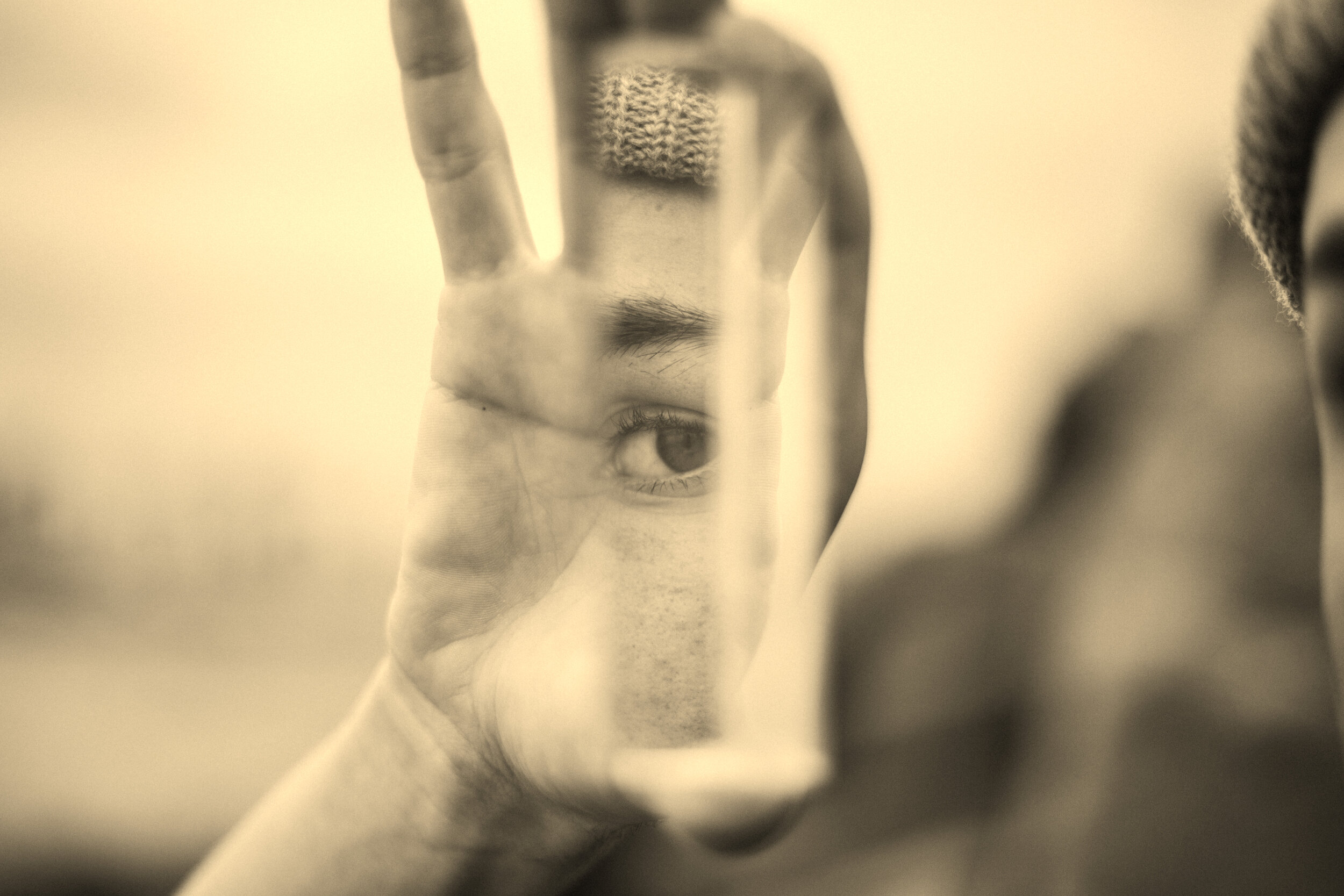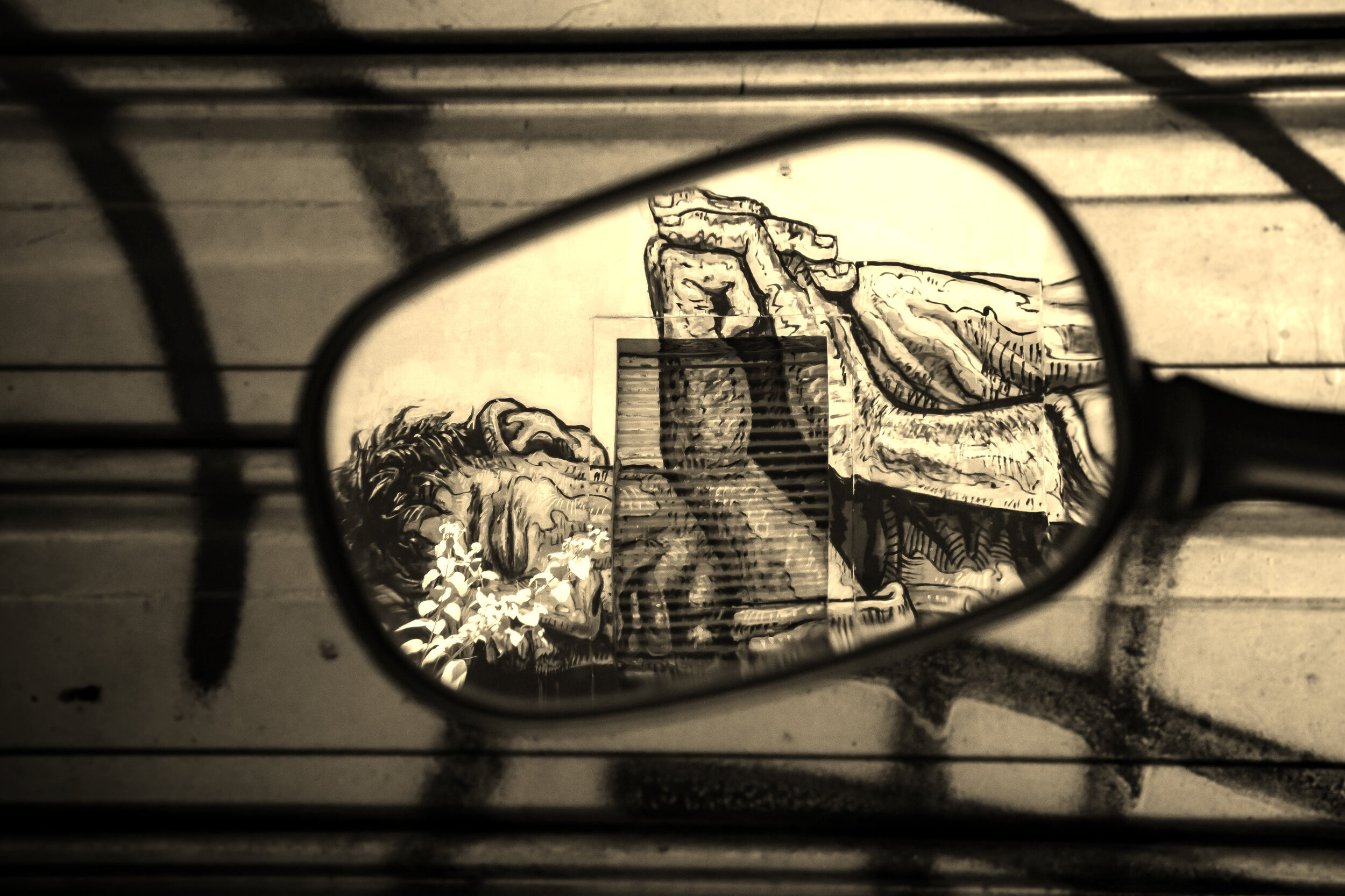The Tyranny of Machine Meaning
Originally published at From The Forests of Arduinna.
I’ve told this story often, and I will tell it again, as I often need to remind myself of it.
Almost a decade ago, during a time in which my entire life was in the process of radical change, I went on a backpacking trip across Europe. I called it a pilgrimage, and it was, and as time continues this word unfolds as even more meaningful a description.
Regardless of what we call it, it was a trip alone to ancient pagan sites and places of particular meaning to me. It was my first such journey without a companion, and the first long period of time during my adult years that I was completely alone with my own thoughts.
No one else was with me to mediate my experience. Smartphones were just becoming a “thing” at the moment, but I didn’t have one, nor had I a laptop or even a watch. I was using paper maps and guidebooks to get around and to find my way, no GPS or any internet service to rely upon.
I did have one modern item, however: a camera, gifted by a friend along with a request I “use it well.”
In the first few days of that trip, I did use it, and quite often. I was in a state of wonder, a state you can easily cultivate in new places and especially in particularly beautiful environments. Everything seemed to me magical, enchanted, breathtaking, and I took relentless photos of the things I saw.
It was perhaps the fifth or sixth day of that trip, hiking along the rugged coastline of Brittany after wandering through ancient standing stone alignments, that I lost the camera. After hours of panic, self-berating, and long retracing of my steps to try to find it again, I eventually understood this was the best thing I ever did.
This is how I wrote about it afterwards:
I wonder, though. Did some higher part of myself leave it on the rocks on purpose? Or did I leave it at the chapel? Its loss has actually been a very good thing for me. Here’s why: I’d see something profound, beautiful, breathtaking, Otherworldly, and immediately fumble for my camera, snap a couple of photos, check to see if I’d caught the image right, and then put it away and walk on.
That is, I stopped seeing things, except to see them for others. I realised this just as the sun was setting, just as I knew I had no hope of getting back before dark. I sat on a rock, frustrated, tired, and found myself seeing something unimaginable in its beauty.
The sun set over the bay, brilliant and dark hues of purples, violets, blues mixing with crimson reflecting off the water of the bay (the tide had come in fully now). Greens of seaweed floated like islands upon the water, and silver danced in the waves where the last whites of the sun hit. The stones of the shore are black, but also dun, as was the sand, though giving off a yellow-gold that seemed like trapped sunlight from the warm day.
I cried, but not from sadness.
I know others have had this sort of experience (for instance, Gordon White mentioned the same sort of moment for himself in our discussion a few months back). When you attempt to capture a vision, or a moment, or an experience with technology, you are no longer in the present.
That is, you actually kill the experience by trying to capture it, just like picking a beautiful flower separates it from the earth which gives it life.
Included in the recently-released trove of “whistleblower” documents regarding Facebook were internal studies showing the deleterious effects of Instagram use on teenage girls. While mostly dismissed by major media commentators as a new form of a moral panic over technology use, and taken seriously only by older sorts of feminists and conservatives, I think these documents more than others should be the primary focus of leftist attention.
Some have pointed out that the studies themselves are not very scientific, and that even the respondents reported that they didn’t think they should stop using Instagram. This misses the point, however: we don’t really have a good way of measuring the effects of social media on how we conceive of ourselves, despite intuitively understanding that it’s not good for us.
I know an Instagram “Influencer,” by the way. That’s a meaningless term, of course: an Influencer is just someone with an inhumanly large following on that social media platform, over 20,000 people (and sometimes in the low millions). What distinguishes an Influencer from any other user is precisely those numbers. I used Instagram often for a few years and accumulated under 2,000 followers, while this person used it for even less time and accumulated 50 times that amount (100,000).
To accumulate that kind of following, you need to post very, very often. Not only that, you need to be particularly good at using hashtags and choosing filters for your photos and videos that evoke certain moods. And of course, you need to be really good at taking evocative and viral photos.
Of course, you can also purchase large numbers of followers, something that many of the earliest Influencers did. These are mostly bulk packages of bot accounts created in ‘bot farms,’ hundreds and thousands of refurbished phones (and computers running emulator programs) with Facebook and Instagram accounts, each programmed with subroutines to mimic actual human use.
Once Facebook identified this manipulation, they began to crack down on it, but were never fully successful. Twitter, likewise, has been unable to deal with this bot problem.
There was another “cheat” to gain large followings on Instagram. For a relatively small fee compared to the potential income becoming an Influencer can generate, a user could pay a service to follow and then unfollow thousands of other users. Typically when someone receives a follow, out of kindness they follow the person back, but since the app does not notify you when that person then unfollows you, a user can gain a massive audience very quickly. (1)
With the exception of people who were already celebrities for other reasons, most Instagram Influencers got to this status through one of these methods of manipulation (if not by both). Now that the company which runs Instagram has implemented algorithms to limit these kinds of cheating, it’s nearly impossible to become an Influencer now. It’s a bit like the way capital works. Capital and Influence both only have “value” when they are rare. That is why the early capitalists who accumulated mass amounts of wealth then created laws to prevent others from doing the same thing. States and revolutions both do this as well, quickly outlawing the founding violence by which they initially gain power to prevent others from competing with their authority.
Now, this Influencer that I know personally? I don’t know if you can call what we are friends, though I definitely enjoy this person’s presence when this person isn’t on their phone.
That’s really rare, though.
We’ve been to several public events together, dinners, celebrations, parties, those sorts of things. Though this person is there, they are never actually there, but rather constantly taking photos and videos of the things around them, editing them, re-shooting them. Several times I’ve watched this person re-arrange tables or direct others to do certain things in order to create an “experience” for Instagram. Such moments, after editing and filtering, with the correct selection of hashtags, then get thousands and thousands of “likes.”
And it’s all fucking fake. Looking through the Instagram posts this person creates from events at which I was present, there is such a wild disconnect between what is presented and what actually happened that it all feels quite shocking. Each vision is an idealized version of the event and the environment, plastic and hollow but perfectly framed for an audience none of us will ever meet.
The same thing doubtlessly occurs on all other Influencer accounts. When I actively used Instagram, I followed quite a few of them (all accounts which followed me first then quickly unfollowed), and often stared in bewilderment at how perfect their lives looked. At first, I would actively remind myself that their photos were staged, that the enchanting visions they presented were heavily filtered, arranged, and of course selected from scores of less-than-perfect photos they later discarded. Yet even actively approaching these images with a critical eye, eventually I started to see them as real, as authentic representations of someone else’s life.
One of the key mechanisms of social identity is comparison. We compare ourselves constantly to others, noting similarities and differences and adjusting our sense of self accordingly. We do this, and need to do this. At the most basic level of human experience, knowing what people around us are feeling, wearing, or looking like helps us understand our place in social groups. “Reading the room” is a core social skill most of us learn to cultivate in our teenage years, and that skill is only possible when we learn to read others.
Comparing ourselves to images rather than to people is much less reliable, of course. We all intellectually know we should not do that, but without constant and active effort to disenchant those images, we regardless fall into comparison. That Influencer I wrote of constantly compares themself to others, and struggles more than I think anyone I have ever met with deep self-hatred, fragile self-esteem, and also the physical torment of an eating disorder.
I know of another such person, a friend, a man with an incredible physique from attentive gym work, someone whom I and many others looked to for advice and encouragement for body work. He deleted all his social media accounts after recovering from an attempted suicide, explaining to us that he realized finally that Instagram was killing his self-esteem and would eventually kill him if he didn’t stop using it.
These two people I mention are both adults, fully “individuated,” with successful careers and very stable living situations. They’re not teenage girls, by which I mean they have had a lot more time to develop their sense of self than an adolescent women has had.
I was never a teenage girl, so I cannot fully imagine what it must be like for them, but I know from my own adolescence that hatred of my body was pretty much a constant theme. From the many women I know who have told me what their youth and adulthood was like, it feels safe to say it’s even worse for them than it ever was for me.
I didn’t have social media back then (it didn’t exist), and I wonder how much worse my life might have been had it existed. All I had to compare myself to were the other boys at school and the obviously idealized men on television (which I stopped watching completely at 13 year old). There were no men or women in my life at that time who ever told me that being a body was just a human thing that we all experience, or that comparison needs to be balanced with a strong sense of independence and will.
Even now, understanding this truth, I was often under the thrall of the idealized image that we create of ourselves and lives through social media, even still after I stopped looking at the Feeds.
In his essay, “The Work of Art in the Age of Mechanical Reproduction,” the Marxist writer Walter Benjamin explored the way that industrialization changed our understanding of art, especially through the mass production of the camera and its products, the photograph and the moving film.
What is most profound about his insights and always least cited is that he drew parallels between the totalitarian drive of fascism and the influence of mechanical reproduction.
The growing proletarianization of modern man and the increasing formation of masses are two aspects of the same process. Fascism attempts to organize the newly created proletarian masses without affecting the property structure which the masses strive to eliminate. Fascism sees its salvation in giving these masses not their right, but instead a chance to express themselves.
Benjamin, as well as others who later built off his work, saw the fascist drive not as a “reactionary” or conservative backlash to progress and industrial society, but rather as an aspect of the machine itself. Instead of the more popular conception of fascism as a revolt against social progress and equality, fascism for Benjamin was a re-channelling of lower-class desires away from revolution and instead back into the capitalist order.
It is not at all a stretch to suggest that the “chance to express themselves” he mentions is fulfilled in the idealized reproduction represented by Instagram and other platforms (TikTok, Snapchat, etc). In social media reproduction of “art,” we turn every part of our life into a product, a commodity to be exchanged and a value upon which corporations can capitalize. The Influencer in particular becomes a node of aesthetic production, highly sought-after for commercial partnerships in exchange for free products or cash payments, while the rest of us unconsciously mimic their poses and devalue our own lives because they do not compare to what we see.
What is being produced, reproduced, and channeled here is the expression of human desire for meaning. Industrial society alienates us not only from each other but from our own selves and capacity to value (that is, attach meaning to something), and social media offers us in its place only the exchange of other people’s valuing.
That is, we are offered only the ability to express ourselves as a poor replacement for our desire and right to shape the world. With that expression comes comparison, not to other humans but to idealized, commodified, and fully mediated reproductions of lives that don’t actually exist. Jean Baudrillard, basing his work on Walter Benjamin’s essay, called these simulacra—copies for which an original no longer exists—and saw this as the dominant mode of capitalist control of human meaning and the inescapable consequence of technology.
We now know that simulacra are making people suicidal.
We already knew this, of course—we know this each time we spend too long on social media and find that we feel shitty about ourselves. Others have it better, have more beautiful bodies and more fulfilling lives, are eating better meals, going on better vacations, posing more often with happier looking friends on terraces overlooking more breathtaking vistas than we ever see outside our windows. The men look more masculine than we will ever be, the women more feminine. (2) Their lives and bookshelves are fuller, their teeth and skin more pleasing, their lovers and families more caring and joyful than anything we could ever hope to have.
The moment you turn all that off, however, you can finally start to see the world around you for what it truly is. When I lost my camera on a cliff on a wild coastline, I finally noticed the beauty screaming for my attention. When I stopped letting the algorithms of the social media Feeds decide for me what was meaningful, I finally remembered that meaning is something I have always held in my hands.
Walter Benjamin saw machine meaning as a core aspect of fascism, a key tool to make us forget we have the right to make the world ourselves. Such a view runs completely counter to the way liberals and progressives understand fascism, since for them the machine itself liberates humans from the terror of the Real. At best, liberals will scoff at anyone suggesting social media is an oppressive force, smear us all as “reactionaries” or Luddites, and offer tepid suggestions to our corporate masters that they slightly lessen the harm the Feed does to teenage girls.
In this way, we can all pretend there is no real problem with the machine itself, only the mental fortitude of a handful of young women who really should know better. Just like any other symptom of the harm capitalism causes to humans, we’ll pretend it’s isolated, unrelated to the system itself, or due to some moral failing of its victims, all the while letting ourselves be ground by gears lubricated not with oil but with the blood and gore of crushed human meaning.
Rhyd Wildermuth
Rhyd is a druid, a writer, and a theorist. He is the director of publishing for Gods&Radicals Press and lives in the Ardennes.
Follow his frequent druidic dispatches at From The Forests of Arduinna.
NOTES
Special note of thanks to Paul Kingsnorth, whose Divining the Machine series inspired some of my thinking on this matter.
The key here is being followed while not following many others, since you must appear to be more popular with others than others are to you.
This is one of the proposed causes of what has been called Rapid Onset Gender Dysphoria (ROGD), a contested and controversial term. In ROGD, a person rapidly develops a sense of being in the wrong body during adolescence despite having shown no self-reported signs of dysphoria previously. Gender clinics have been reporting sudden spikes in teenaged females suddenly experiencing dysphoria, outpacing teenaged male clients sometimes to a factor of 3 or more. Even trans-identified physicians and counsellors associated with major trans health organizations have begun to express concern over this sudden spike, and many female desisters/detransitioners repeatedly cite social media as a key factor in their sudden dysphoria, not feeling “feminine” enough in comparison to others on social media. Whether or not ROGD exists, it isn’t unreasonable to suspect social media’s presentation of idealized masculinity and femininity isn’t helpful to people experiencing dysphoria.




